Cows and almonds aren’t the only sources of milk. Even if roughly 85% of the world’s milk supply comes from cows, you might be surprised to find camel milk in certain exquisite shops. However, why would you be interested in any other type of milk?
First, milk from non-bovine animals may not trigger the allergies that some people have. On top of that, exotic milk (referring to the one that doesn’t belong to cows) is much more nutritious and, in some cases, even tastier.

As the world is slowly introducing more diverse products, it is better to know beforehand what type of milk you might find while shopping. Therefore, we’ve prepared a list of some other animals that produce milk! However, before discussing them, it’s essential to mention that the nutritional values are only estimates, especially for the most uncommon types of milk.
1. Giraffe

The biggest
giraffe milkconsumers are baby giraffes.
©Nicola_K_photos/Shutterstock.com
| Fat content | Calorie content | Protein content | Lactose content |
|---|---|---|---|
| 12.5% | 148 kcal / 3.52oz (100g) | 1.26oz (36mg)/kcal | Lower than cow milk |
While it was dubbed the next incredible superfood in 2017, giraffe milk is far from being consumed regularly and commonly throughout the world. This is because, first of all, it is very difficult to milk giraffes.
On the other hand, giraffe milk is rich in fat, about three times more than cow milk – roughly 12.5% fat content. For the time being, the biggest giraffe milk consumers are baby giraffes.
2. Reindeer
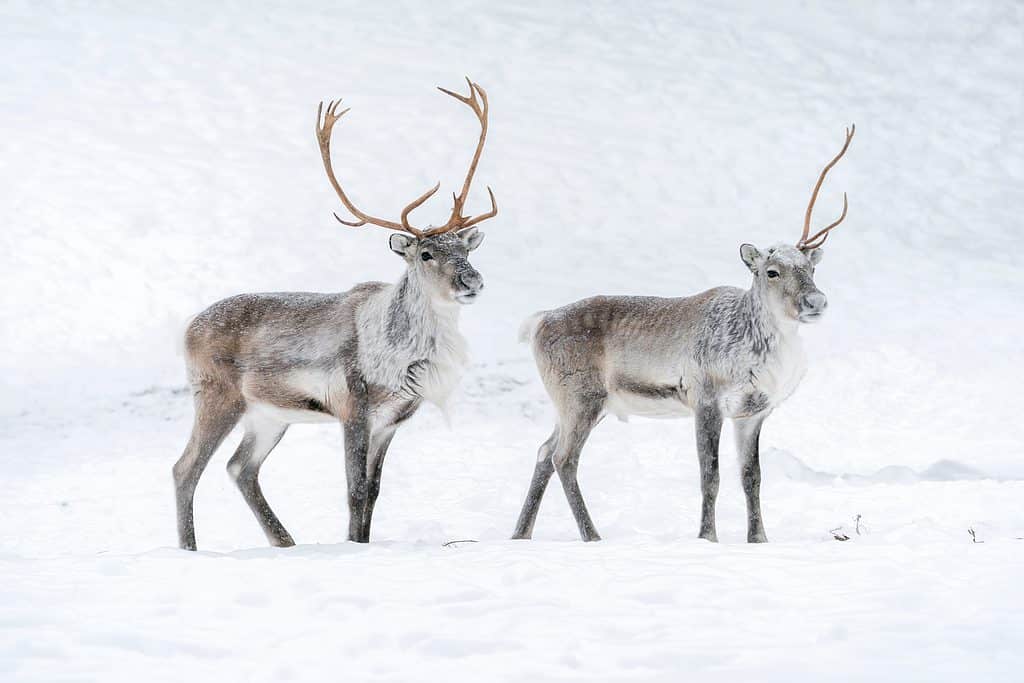
Reindeer milk is quite similar to cow milk, especially regarding calcium content.
©Tam and Trace Photography/Shutterstock.com
| Fat content | Calorie content | Protein content | Lactose content |
|---|---|---|---|
| Around 20% | 198 kcal / 3.52oz (100g) | 0.34oz / 3.5oz milk (9.9 g / 100g milk) | 0.08 oz / 3.5 oz milk (2.5g / 100g milk) |
Reindeer milk is quite similar to cow milk, especially regarding calcium content. There are, however, some differences regarding the potassium and sodium contents – namely, reindeer milk has less of those minerals.
The main difference that led to reindeer milk being consumed in cold regions is that this animal can survive in such environments, whereas cows cannot. On top of that, reindeer can also be used to carry items and pull sleds. One could say they’re a super cow!
3. Sheep

Sheep milk is often recommended to prevent obesity, cancer, and type 2 diabetes.
©iStock.com/DejaVu Designs
| Fat content | Calorie content | Protein content | Lactose content |
|---|---|---|---|
| 0.24oz / 3.5oz milk (7g / 100g milk) | 107 kcal / 3.52oz (100g) | 0.21oz / 3.5oz milk (6g / 100g milk) | 4.76% |
You might have known this one, but sheep milk is consumed regularly in certain regions worldwide, especially in the Middle East and Eastern Europe. It is rich in amino acids and solids, making sheep milk better than cow milk.
Milk from this animal also contains a wide array of vitamins, proteins, fatty acids, and immunoglobulins. Thanks to its high linoleic acid content, sheep milk is often recommended to prevent obesity, cancer, and type 2 diabetes.
4. Zebu
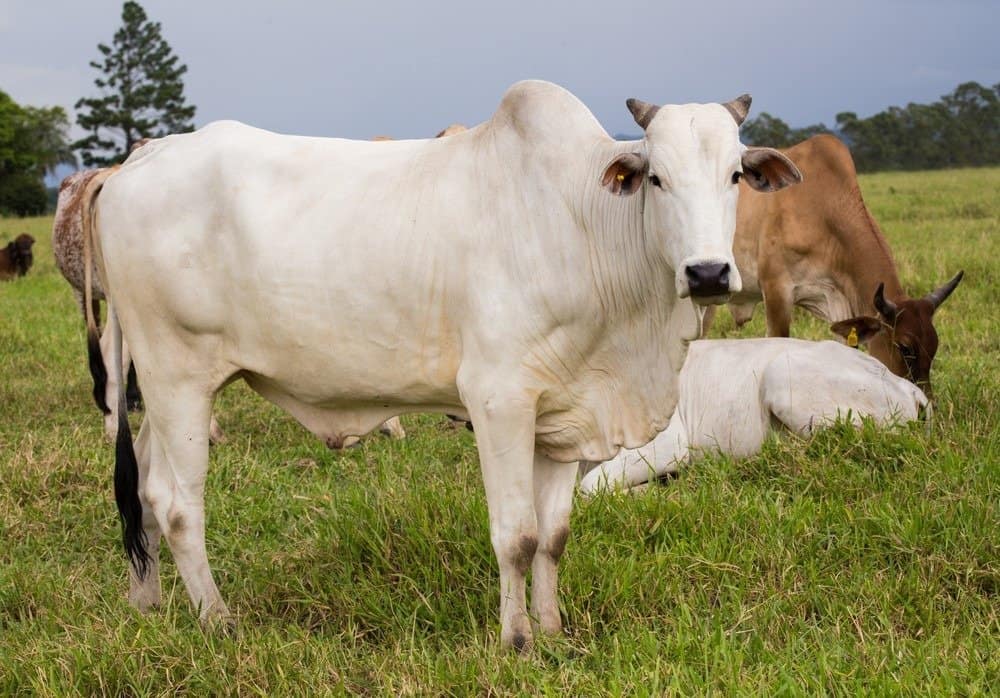
The zebu is a bovine mammal quite similar to the cow.
©Mostovyi Sergii Igorevich/Shutterstock.com
| Fat content | Calorie content | Protein content | Lactose content |
|---|---|---|---|
| 4.3% | – | 3.7 – 4.2% | – |
The zebu is a bovine mammal quite similar to the cow – the main difference is that zebus can survive tropical heat. As a result, the species is common in China, India, and Brazil. While zebu milk is preferred for drinking, people use it for preparing many other food products.
In India, people use zebu milk to make clarified butter (also called ghee). In Madagascar, it is used to make cheese, while in Kenya, zebu milk is the base for ash liquid yogurt.
5. Horse/Donkey
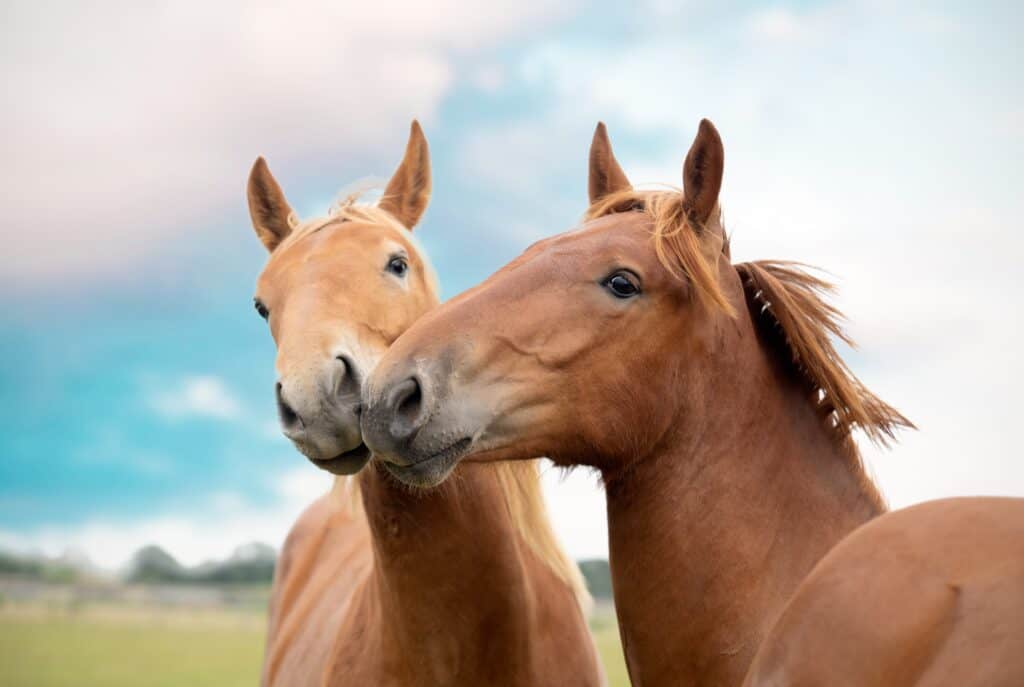
Both
horse
and donkey milk are known for their immunological properties.
©JM-DIGITALPHOTOGRAPHY/Shutterstock.com
| Fat content | Calorie content | Protein content | Lactose content |
|---|---|---|---|
| 1.21% | 48 kcal / 3.52oz (100g) | 8.30% | 6.71% |
Horse and donkey milk are quite similar in terms of composition. They are drunk worldwide, especially in Central Asia, Russia, and Italy. In the latter country, horse milk was considered a viable option for feeding children allergic to the good-old cow milk.
Both horse and donkey milk are known for their immunological properties and are usually recommended to the elderly. Horse milk is known for having antacid properties. As a result, people drink it to treat peptic ulcers and tuberculosis, to name a few.
6. Buffalo
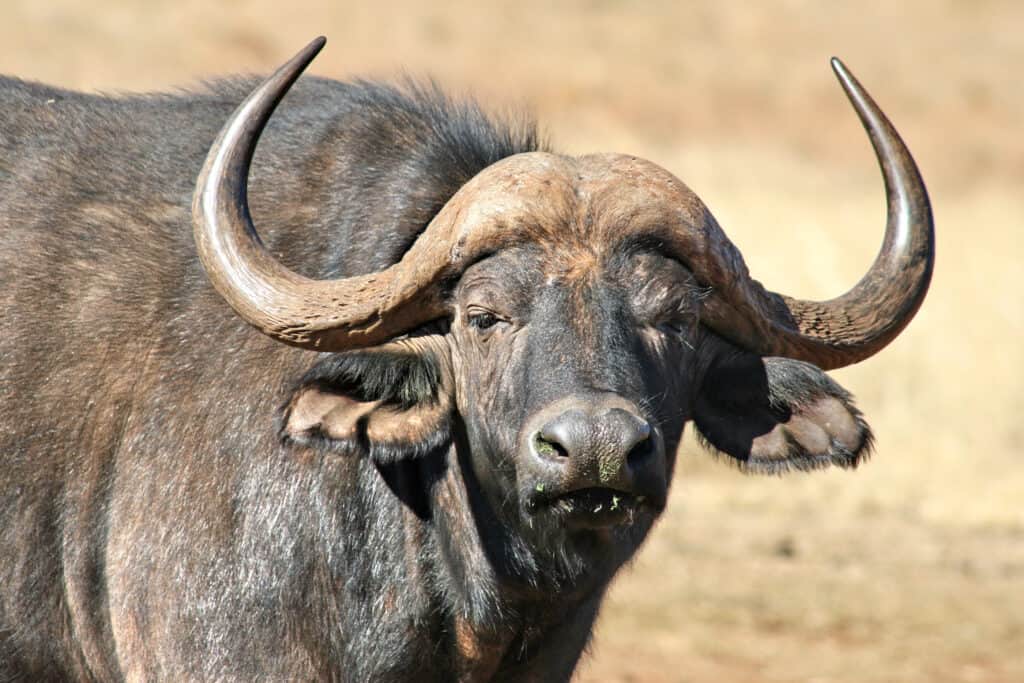
Buffalo milk has less cholesterol content.
©Hannes Thirion/Shutterstock.com
| Fat content | Calorie content | Protein content | Lactose content |
|---|---|---|---|
| 7-8% | 97.1 kcal / 3.52oz (100g) | 0.017oz / 3.52oz milk (3.6g / 100g milk) | 4.86% |
Buffalo milk accounts for 13% of the total milk production worldwide. In terms of contents, it is fatter and has more lactose, protein, and minerals than cow milk. At the same time, thanks to its high solids content, buffalo milk can create more cheese, butter, and cream.
Moreover, buffalo milk has less cholesterol, making it ideal for improving cardiovascular health. It is rich in minerals, with rather high phosphorus, potassium, and magnesium content.
7. Yak
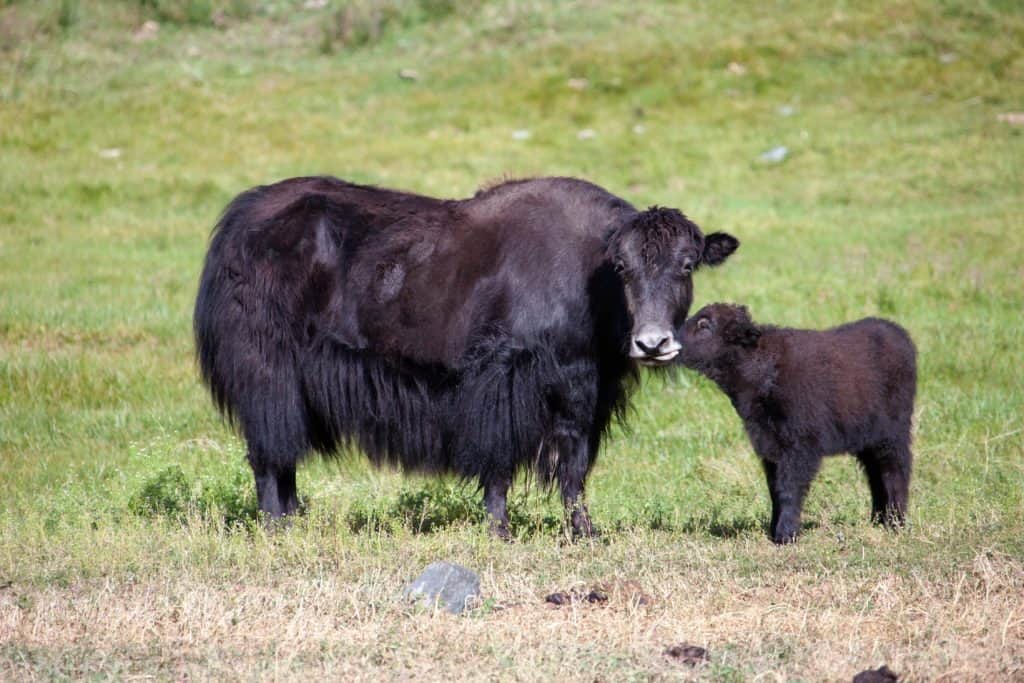
Yak milk contains more protein than common bovine milk (cow and goat).
©Okyela/Shutterstock.com
| Fat content | Calorie content | Protein content | Lactose content |
|---|---|---|---|
| 5.5 – 7.5% | 101.2 kcal / 3.52oz (100g) | 4.0 – 5.9% | 4.0 – 5.9% |
Like reindeer, yaks were chosen as the main milk producers in regions that are too cold for cows. As you might already know, yaks are common in Mongolia’s and China’s mountainous areas. Yak milk is famous throughout the world for being highly nutritious.
Reportedly, yak milk contains more protein than common bovine milk (cow and goat). At the same time, it has a higher content of amino acids than the other types of milk mentioned. It is most often used to make cheese.
8. Goat

Goat milk barely contains A1 casein proteins.
©iStock.com/aurorat
| Fat content | Calorie content | Protein content | Lactose content |
|---|---|---|---|
| 0.14oz / 3.52oz (4.1g/ 100g) | 69 kcal / 3.52oz (100g) | 0.12oz / 3.52oz (3.6g / 100g) | 4.20% |
Goats and goat milk are preferred in regions with poor soil, namely regions that don’t have the means to grow cows effectively and fruitfully. Goat milk barely has any content of A1 casein proteins. This means that people allergic to cow’s milk might rejoice in a cup of goat milk without suffering the consequences later. On top of that, goat milk is also easier to digest thanks to the lack of agglutinin proteins.
Ultimately, this milk is preferred by people who keep count of their protein intake, as it has more protein per serving than cow and goat milk.
9. Camel

Camel milk has a high antioxidant content.
©Fabian Junge/Shutterstock.com
| Fat content | Calorie content | Protein content | Lactose content |
|---|---|---|---|
| 1.2 – 6.4% | 42 kcal / 3.52 oz (100g) | 3.1% | 4.4% |
Unlike cow milk, camel milk contains only A2 casein. This makes it more tolerated and easier to digest than most other types of milk out there. This aspect comes with a price – a rather big one!
Besides, camel milk has a high antioxidant content. As you might know, antioxidants prevent cell damage. Because of this, camel milk is recommended when following treatments against or for preventing diabetes and cancer. Scientists hope that it might be used to treat milk allergies, certain autoimmune affections, and autism.
10. Cockroach

Cockroach
milk is rich in fats, proteins, and amino acids.
©IrinaK/Shutterstock.com
| Fat content | Calorie content | Protein content | Lactose content |
|---|---|---|---|
| 16 – 22% | 280 kcal / 3.52oz (100g) | 45% | 0% |
Here’s the unexpected! You might call this a special mention, but cockroaches do produce milk. Naturally, those that do so, namely Diploptera punctata, are the only cockroach species that reproduce by giving birth to live specimens. This cockroach produces milk and feeds it to its babies before actually giving birth.
The scientists that analyzed this milk discovered that it is almost four times richer in calories than cow milk. Cockroach milk is also rich in fats, proteins, and amino acids.
Clearly, it is not ideal for human consumption! After all, you’re more likely to come across a cow and milk it rather than learn to properly milk a cockroach!
Summary of the 10 Animals That Produce Milk (Other Than Cows)
| Name of Animal | Fat content | Calorie content | Protein content | Lactose content |
|---|---|---|---|---|
| Giraffe | 12.5% | 148 kcal | 1.26oz | lower than cow’s |
| Reindeer | ~20% | 198 kcal | 0.34oz / 3.5oz | 0.08oz / 3.5oz |
| Sheep | 0.24oz / 3.5oz | 107 kcal | 0.21oz / 3.5oz | 4.76% |
| Zebu | 3.7 – 4.2% | |||
| Horse/Donkey | 1.21% | 48 kcal | 8.30% | 6.71% |
| Buffalo | 7-8% | 97.1 kcal | 0.017oz | 4.86% |
| Yak | 5.5 – 7.5% | 101.2 kcal | 4.0 – 5.9% | 4.0 – 5.9% |
| Goat | 0.14oz / 3.52oz | 69 kcal | 0.12oz | 4.2 % |
| Camel | 1.2 – 6.4% | 42 kcal | 3.1% | 4.4% |
| Cockroach | 16 – 22% | 290 kcal | 45% | 0% |
The photo featured at the top of this post is © Peter Betts/Shutterstock.com
Sources
- Goop, Available here: https://goop.com/wellness/health/11-milks-dont-come-cows/
- Food and Agriculture Organization, Available here: https://www.fao.org/dairy-production-products/production/dairy-animals/en/
- Smithsonian Magazine, Available here: https://www.smithsonianmag.com/science-nature/seven-most-extreme-milks-animal-kingdom-180956588/
- Research Gate, Available here: https://www.researchgate.net/figure/Lactose-content-of-cow-sheep-buffalo-and-goat-milk-samples_fig4_312583378
Thank you for reading! Have some feedback for us? Contact the AZ Animals editorial team.






